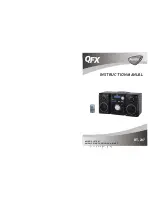
DECTnetIP
Properties
118
■
RFP 41: Access via shielded CAT5 Ethernet cable (STP cable, Shielded Twisted
Pair cable); offers simultaneous function of a WLAN Access Point conforming
with the IEEE 802.11b/g protocol; external antennas; 8 voice channels
■
RFP 43: like the RFP 41; mounted outside enclosed areas (IP55); external
antennas
Note:
When started, the operating software for the DECTne-
tIP base stations is transmitted via TFTP protocol from the
OpenCom 100. The configuration for the start sequence is
transmitted by the DHCP server of the OpenCom 100 to a
DECTnetIP base station for the start sequence. The operating
software is saved on the Media Gateway Card. DECTnetIP
base stations can only be operated with the OpenCom 130/
150 if a Media Gateway Card has been installed.
If VoIP telephony is already being used, Ethernet cable access makes good sense.
Transmission of telephony signalling and voice data via TCP/IP also offers usage of
existing network infrastructure and an increase in range using suitable methods.
VPN connections, for example, can be used for data links to provide service to
remote or hard-to-reach locations.
10.1.2 Features
All DECTnetIP base stations can be connected to a CAT5 Ethernet cable with a 10/
100 Base T. Power is supplied either via Power-over-LAN (IEEE 802.3af ) or via an
additional power supply unit.
DECT terminals offer all system telephony features. DECT telephones supporting
the GAP standard can also be operated. Transparent GAP device handovers are
supported. DECT encryption can be deactivated if desired.
VoIP audio communication between the DECTnetIP base station and the
OpenCom 100 is via the RTP/RTCP protocol. RTP voice data are directly converted
into DECT voice data by the base station. Base stations support VoIP voice data
compression using the G.711, G.729 and G.723 codecs.
Summary of Contents for OpenCom 130
Page 1: ...130 OpenCom100 131 150 Mounting and Commissioning User Guide ...
Page 10: ...8 ...
Page 202: ...Index 200 Notes ...
Page 203: ......
















































